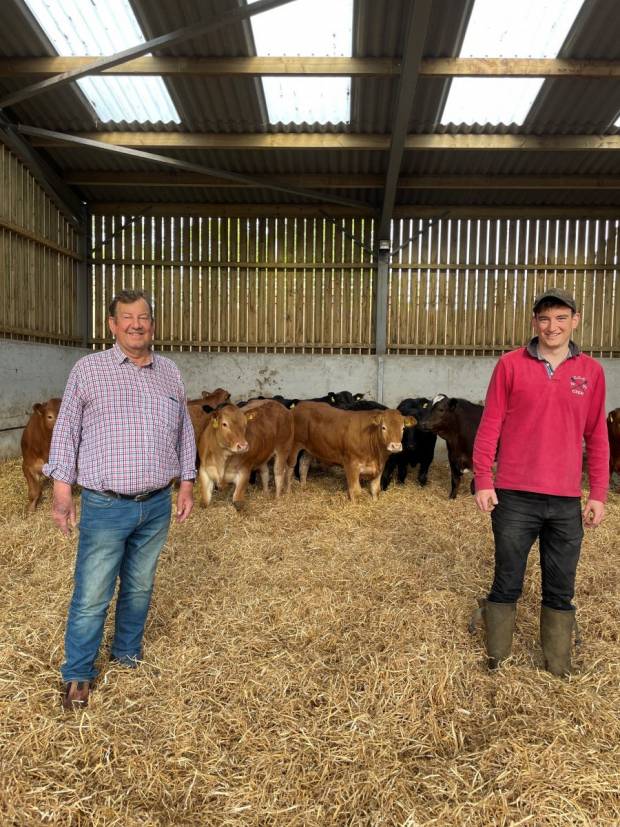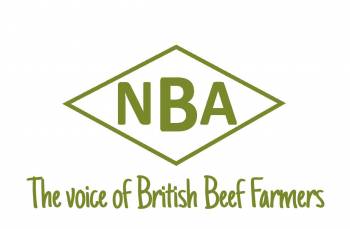Harry Amos - Case Study
18th May 2022

Harry Amos works alongside his father, Gordon, on his family’s farm near Market Harborough in Leicestershire. The farm’s main enterprise is a large beef finishing unit which aims to turn over in the region of 500 head of steers and heifers per year.
Alongside the cattle enterprise, the Amos’s also run a flock of 140 Texel cross ewes which Harry re-established after finishing college and returning to the home farm. Previously the family lambed 400-500 ewes each year, however they cut back due to health concerns before selling entirely in 2002. They also manage 200 acres of arable land.
Cattle are bought in at 10-14 months old and are primarily Limousin or British Blue cross, with some Charolais too. “We aim to stick to the premium end of the market,” explains Harry. “We used to buy all our cattle from the north of England; Carlisle, Kirby Stephen, Darlington mainly. Unfortunately, due to Dad’s health it got a bit difficult travelling north, so we do now buy a lot from Shropshire too.”
The family try to keep the sheds as full as possible all year round which means buying in on a monthly basis where possible. “Some months it’s not doable due to a variety of reasons, but overall, we like to keep the sheds full to optimise production and increase efficiency,” says Harry. “We also graze around 150 through the summer and do try to buy some a bit older to fatten outside in the fields closest to home. Everything other than that is pulled inside to fatten when we think they’re strong enough.”
When grazing, the only extra supplement cattle are given is a mineral lick. Around one month before coming into the sheds, Harry begins feeding from a bag to allow time to adjust to being handled and coming to people, which makes management easier and safer once inside.
When housed, cattle are fed a barley blend ration mixed with stock feed potatoes (for bulk and to keep costs down), as well as maise silage which comes from a neighbouring farm in exchange for contracting work. Stock are also offered ad-lib straw and baled silage.
Harry is now hoping to follow in the footsteps of his grandfather who used to do a lot of showing. “Dad did some showing too, and has shown at Birmingham and Smithfield, but steered clear after too many kicks! He has always tried to find me a couple of suitable animals to show though which has given me a bit of experience.
“We got on really well last Christmas with two and I also showed the Champion baby beef at the English Winter Fair for a friend, which really spurred me on to give it a bit more of a go this year.”
NBA Beef Expo will be Harry’s first time out this year where he has a Limousin bullock, a baby bullock and a baby heifer entered. This will, in fact, be Harry’s first time in the showring at Beef Expo and as ever, it’s encouraging to see fresh faces, especially the next generation, showing enthusiasm and getting involved.
On the importance of Beef Expo to the wider industry, Harry concludes: “Events like Beef Expo are invaluable to the industry. They give us a voice and a platform to show the work we are doing, as well as see what others are doing within the industry. From a social point of view too, for many, these events are one of the handful of times they will spend a day off-farm socialising.”
An active member of Norton and Gaulby Young Farmers Club, Harry is keen to reiterate the importance of encouraging and supporting the next generation in order to protect the future of the British beef industry. “There’s going to have to be a lot of change in the beef industry, especially when it comes to encouraging and inspiring the next generation to take it all on,” says Harry. “Going to markets and farm sales, the majority of people are 40 plus and there’s only a handful of young people involved. If we don’t make the changes now, we won’t have the people needed to support the future of the industry.”


